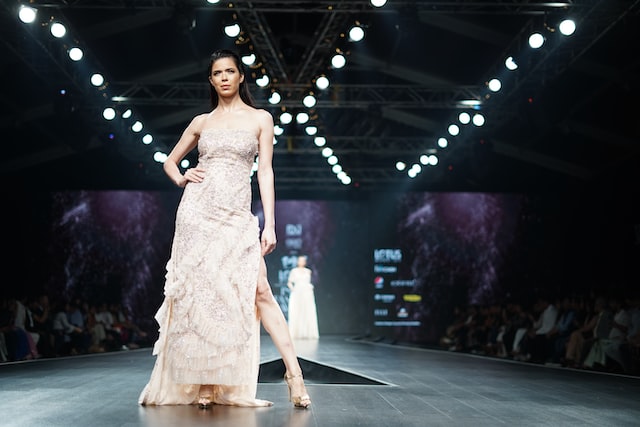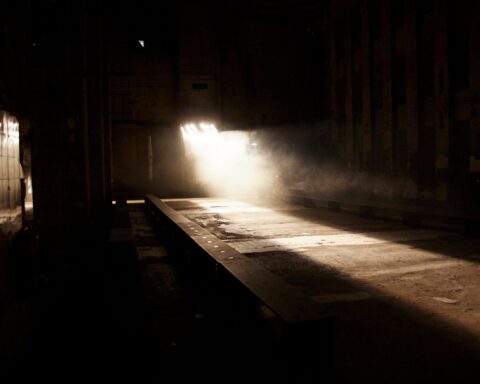
The start of New York Fashion Week is upon us this week, which feels like a good time (albeit a bit late) to give designers a very important – but simple piece of advice: you don’t have to produce or present a fashion collection every season if you’re not inspired to do one.
It becomes painfully evident by looking at enough collections during this lightning-quick fashion cycle that we’ve gotten ourselves into over the past couple of decades that some designers are just not inspired enough to create a collection – and that is okay. While some recent collections have either given us new ideas and concepts, have been transformative, or have simply been good at giving the brand’s clients what they want year after year, many collections have had no vision whatsoever. How about the spate of recent collections that have been billed as a revisiting of the archives? This sounds like code terminology for “I have no ideas, but I need something to put out in order to make a profit.”
Designers may feel the need to present a collection, regardless of how they feel about their work, because they think that they have to satisfy the fashion beast. Where did this way of thinking come from? Surely, if you started designing clothes, then there must have been some level of love for what you do. To be in a field like fashion, which can be gut-wrenching at times, you have to have a deep love of the subject matter. It has to be in your blood, or there will be no long-term motivation to continue.
With this in mind, satisfying yourself and your creative impulses has to be at the top of the list unless you’re in fashion to be purely transactional. If you’re in fashion to conduct business and business only, then by all means, continue abiding by this vicious cycle that the fashion industry has set forth for designers (and indeed, everyone else that is a part of the fashion system). If you have even the slightest sensibility of artistic drive, you need to exit this runaway train of a system and present your design collection when it suits you.

Speaking of artistic drive, what happened to respect for the creative process? Sure, fashion is a business, but one of the things that Manic Metallic has always contended is that fashion is an art form. In being an art form, the creators of these pieces of art – the fashion designers – each have some semblance of a creative process (whether that is an extensive one or not) that gives them the inspiration to make new work that they are proud to associate themselves with. If the creative process is artificially divided into 3-4 (or more) different fashion collections every year, then one wonders how it is possible to create that many yearly collections without sacrificing the quality and integrity of the creative portion of a designer’s – or of a brand’s – output.
If, for example, you’re putting out a fall/winter collection, a spring/summer collection, a pre-fall collection, and a resort collection, that’s four different collections for which a designer has to worry about plowing their brains for different ideas. That doesn’t take any collaborations or partnerships into account with which you might get involved. Unless you’re an all-powerful being, almost no one can maintain that pace without there being a cost – whether that be physical, financial, emotional, creative, or mental.
We need to acknowledge that the current fashion system is hostile to both the creative process and to any potential measure of sustainability. Because let’s not forget, this relentless pace at which the industry operates pushes more and more products out into the world – much of which will never be used and some of which will, but sparingly. This push for more – this push for ‘faster’ – is degrading the planet, and for what? To make a buck (or a billion). The speed of the fashion industry is not only selling out the creativity of fashion designers and brands; it is selling out the Earth.

What are a couple of potential answers to this quandary, then? What can designers do as an alternative?
The most obvious answer – which we mentioned earlier in this article – is to opt out of the fashion calendar altogether out of respect for your creative drive and passion. Opting out of fashion week presents its own issues. It means that you might have to work harder to get press attention for your work. That is one advantage of cohesive fashion weeks: press members and buyers are all in one spot at the same time, meaning that cohesive fashion weeks still give the best bang for one’s buck with respect to both industry and public attention put onto your new work.
This attention does come at a (quite literal) cost, though. Fashion shows are very expensive to stage, and if a designer is sending out a half-baked idea just for the sake of having something to release, then it is not only a monstrous waste of money and time – it puts their work in a negative light. The fashion industry is all about what you’ve done lately. If the last thing that they remember from you is a lackluster collection, you may or may not get another chance to impress them with your work. You may get a couple more chances if you were in their good graces in the first place. But, why get in the habit of putting out work just for the sake of it and risk damaging your brand?
The second solution provides a middle ground: only show a fashion collection at fashion week if you have a collection ready to present that you are proud of. You should never put out a mediocre product and be okay with putting your name on it. If you’re going to do that, why be high-fashion? Why not just go commercial and start selling your clothes at big box stores like Walmart? The fashion world is looked to by the other rungs of the apparel ladder as a beacon of new ideas, concepts, and innovation, and mediocrity should not be a part of the equation at a brand that calls itself high fashion.
If you are happy with what you have to offer in a collection, and it just so happens that fashion week is approaching, then you should present a collection if you can afford it. If your creative cycle does not line up with the upcoming fashion calendar, skip showing until there is a fashion week where your interests combine with those of the industry. This is not to say that you should not do any work at all in the meantime. Again, this suggestion is meant to liberate designers from needing to stick like glue to the fashion system.
In short, do not be afraid to put your interests and creative processes ahead of those of the fashion industry. While a healthy balance needs to be struck between what you want and need & what fashion wants and needs, you come first. You’re the creative, and creatives matter.
To subscribe to Manic Metallic‘s Substack newsletter, click here. To follow us on Bluesky, click here.




